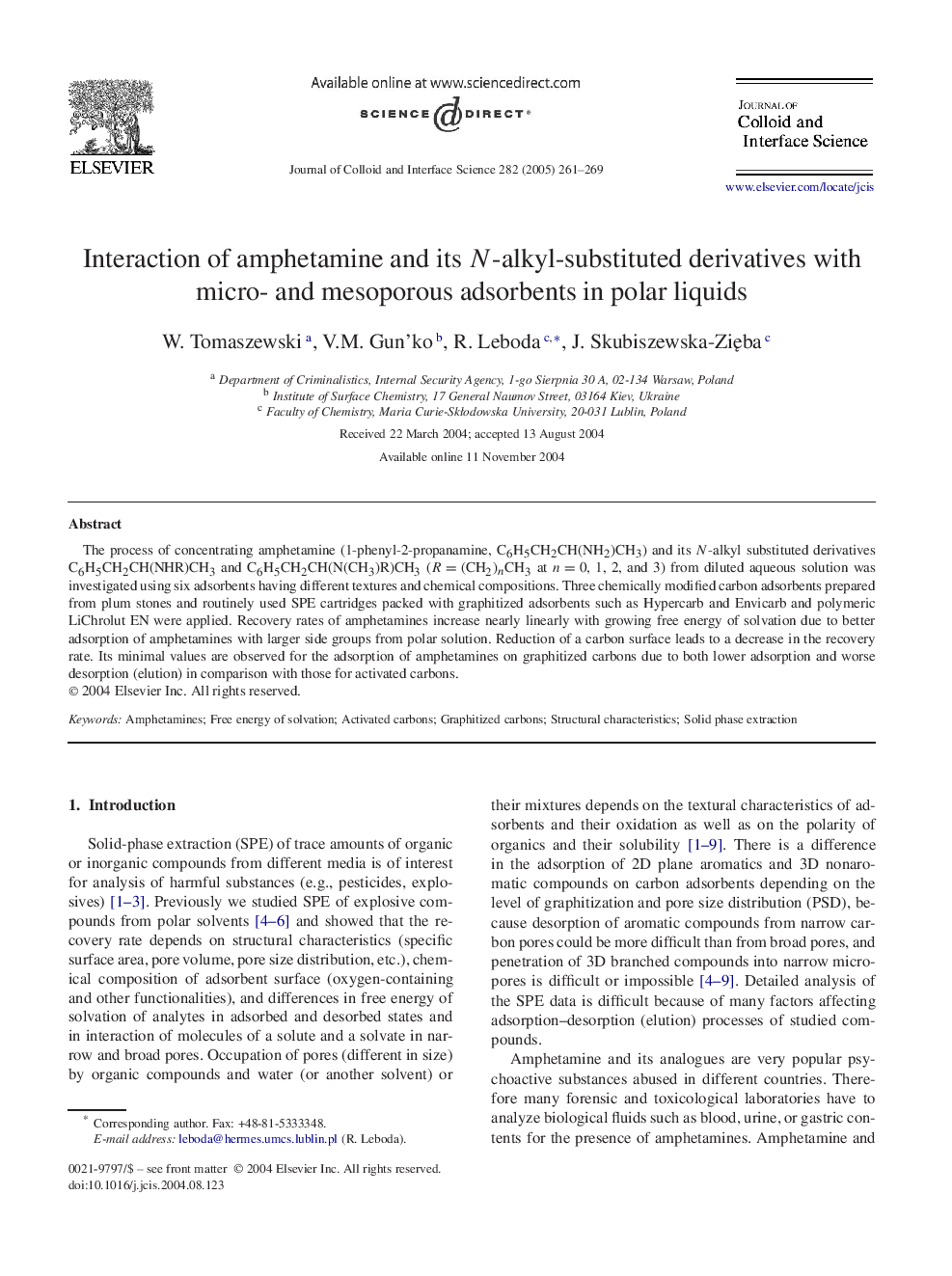| Article ID | Journal | Published Year | Pages | File Type |
|---|---|---|---|---|
| 10378753 | Journal of Colloid and Interface Science | 2005 | 9 Pages |
Abstract
The process of concentrating amphetamine (1-phenyl-2-propanamine, C6H5CH2CH(NH2)CH3) and its N-alkyl substituted derivatives C6H5CH2CH(NHR)CH3 and C6H5CH2CH(N(CH3)R)CH3 (R=(CH2)nCH3 at n=0, 1, 2, and 3) from diluted aqueous solution was investigated using six adsorbents having different textures and chemical compositions. Three chemically modified carbon adsorbents prepared from plum stones and routinely used SPE cartridges packed with graphitized adsorbents such as Hypercarb and Envicarb and polymeric LiChrolut EN were applied. Recovery rates of amphetamines increase nearly linearly with growing free energy of solvation due to better adsorption of amphetamines with larger side groups from polar solution. Reduction of a carbon surface leads to a decrease in the recovery rate. Its minimal values are observed for the adsorption of amphetamines on graphitized carbons due to both lower adsorption and worse desorption (elution) in comparison with those for activated carbons.
Keywords
Related Topics
Physical Sciences and Engineering
Chemical Engineering
Colloid and Surface Chemistry
Authors
W. Tomaszewski, V.M. Gun'ko, R. Leboda, J. Skubiszewska-ZiÄba,
